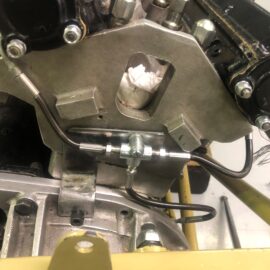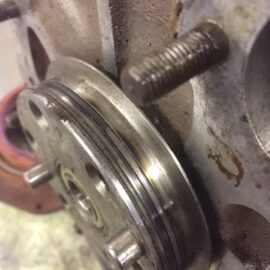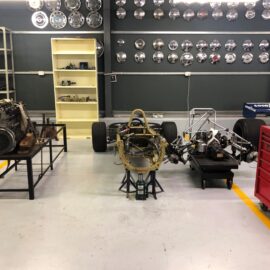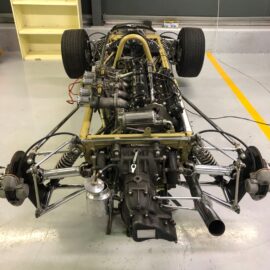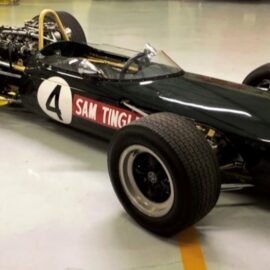
01 Nov Spanner Works: JP du Plessis
A regular feature, outlining the activities of FMM’s workshop personnel who are responsible for repairing, renovating, refurbishing and restoring the museum’s large and varied collection of vehicles. This month, technician JP du Plessis reports on fixing a leak in FMM’s famous ex-John Love LDS F1 car…
LDS was a South African-built Formula 1 car manufactured by local racing hero Louis Douglas Serrurier, whose initials make up the car’s name. This car was commissioned by Sam Tingle, and was essentially an authorised copy of the Brabham BT11 with a Cooper F1 suspension. Fitted with a 2.7-litre Coventry-Climax four-cylinder engine, it made its début at the end of 1965 before Tingle went on to finish second in both the 1966 and ’67 SA F1 championships. The LDS was then fitted with a three-litre Repco V8 engine and in 1968 appeared in Team Gunston livery as part of the first F1 team in the world to carry full tobacco company sponsorship.
Tingle retired the car after it had appeared in 30 races including three SA grands prix, scoring two wins, 10 second places and seven thirds. It was the tenth and last LDS to be built, and the most successful.
During FMM’s quarterly “stretching of legs” of the race cars at the PlaasPad, curator Wayne Harley noted that the LDS was not revving correctly. Upon closer inspection, oil could be seen leaking from around the rear main seal area, causing a mist of oil being sprayed onto the clutch, frame and rear cover of the car. Oil on the clutch is never a good idea, so it was decided to expose the culprit as soon as possible.
Once back at the workshop, JP du Plessis started the investigation by removing the covers, disconnecting the rear suspension, pipes and electrical cables, after which the entire drivetrain was removed to enable it to be worked on outside the car. To get to the rear main seal, the Hewland gearbox was then carefully separated from the Coventry-Climax engine, leaving only the flywheel and clutch assembly in the way. With the flywheel and clutch removed, the seal was exposed and it could clearly be seen that the surface upon which the rings run against was turning in its housing. Now, this is not an ordinary type of crank seal. The principle is that a seal is formed by two piston rings that run in two grooves on the crankshaft, while their outside diameters run against a housing that is fitted to the engine block.
So it was decided that the entire engine would be sent out to have the sealing surfaces re-engineered and fixed in position so that the rings would be able to seal up against the housing. While this was happening, the frame and covers were thoroughly cleaned where the oil had been sprayed. The flywheel was also deburred at the ring gear to improve starter motor operation.
Once the engine had been returned, it was inspected before reinstalling the flywheel, clutch and pressure plate. The check was fully justified because it was found that the inlet cam cover was installed on the exhaust side and vice versa, so they were removed and fitted correctly with new gaskets made up in the workshop.
While the engine was still out, the carburettors were also examined and adjusted, and it was noted that their needle and seat units will need replacement soon. The carbs are Weber 58DC03s, so you can’t simply get the units on order at the local Midas… To set the float levels, an adjustment tool was then made up in the workshop according to the measurements and drawings in the carburettor manual.
The original hard pipes carrying oil from the engine oil galleries to the cams were also worn out, so a new braided flexi-hose set-up was made and installed.
Then it was time to reassemble the car and fit the gearbox to the engine. This was quite a process due to the tight clearances and access to fasteners through the engine cradle, exhaust and suspension components, to name a few. A few special tools were made in order to reach, align and tighten components in place.
With everything fitted and fastened, all the fluid containers were refilled, brakes and clutch cylinders were bled and the tyre pressures checked. The LDS was then given a run again and it was confirmed that the rear main seal repair had solved the oil-spray issue.




